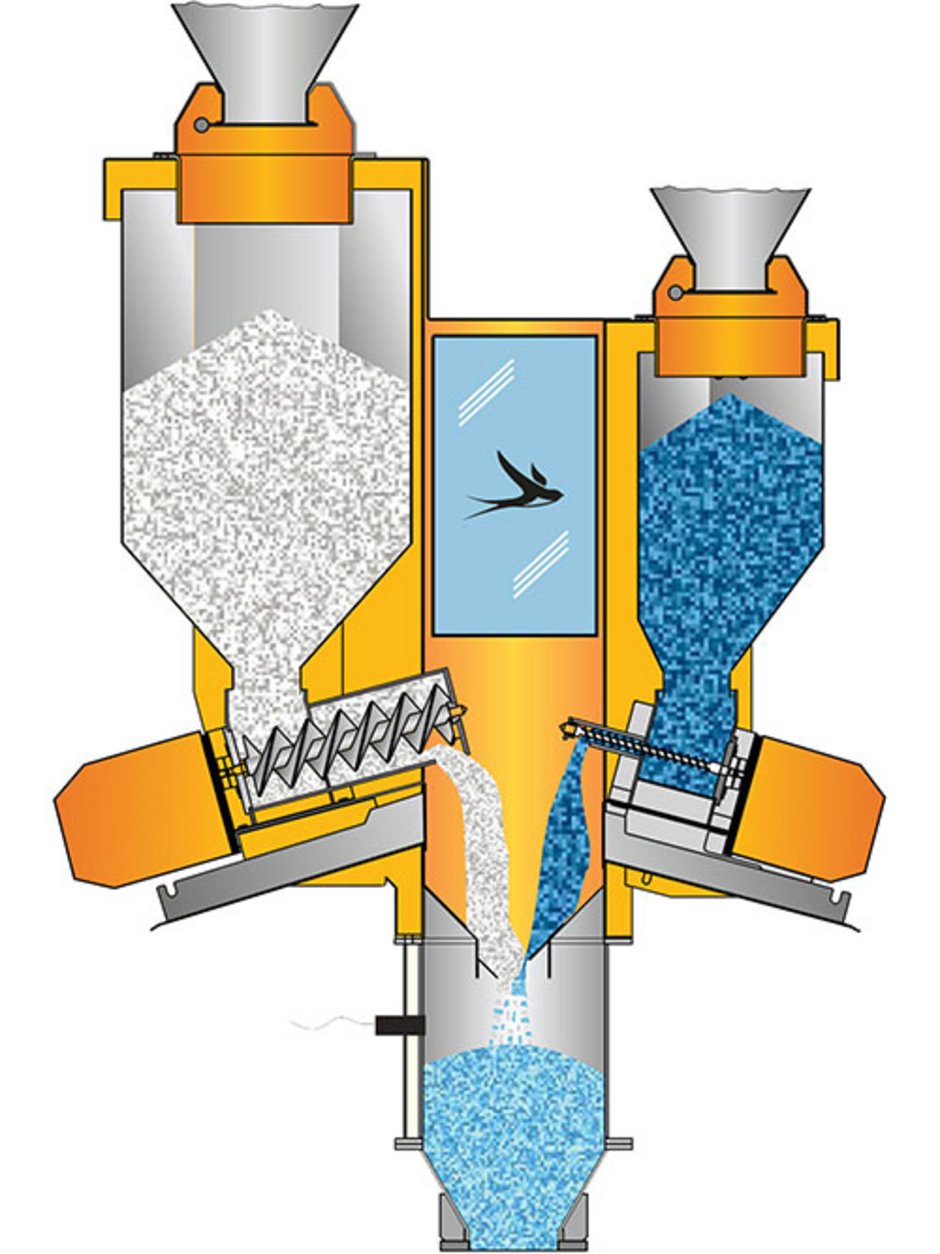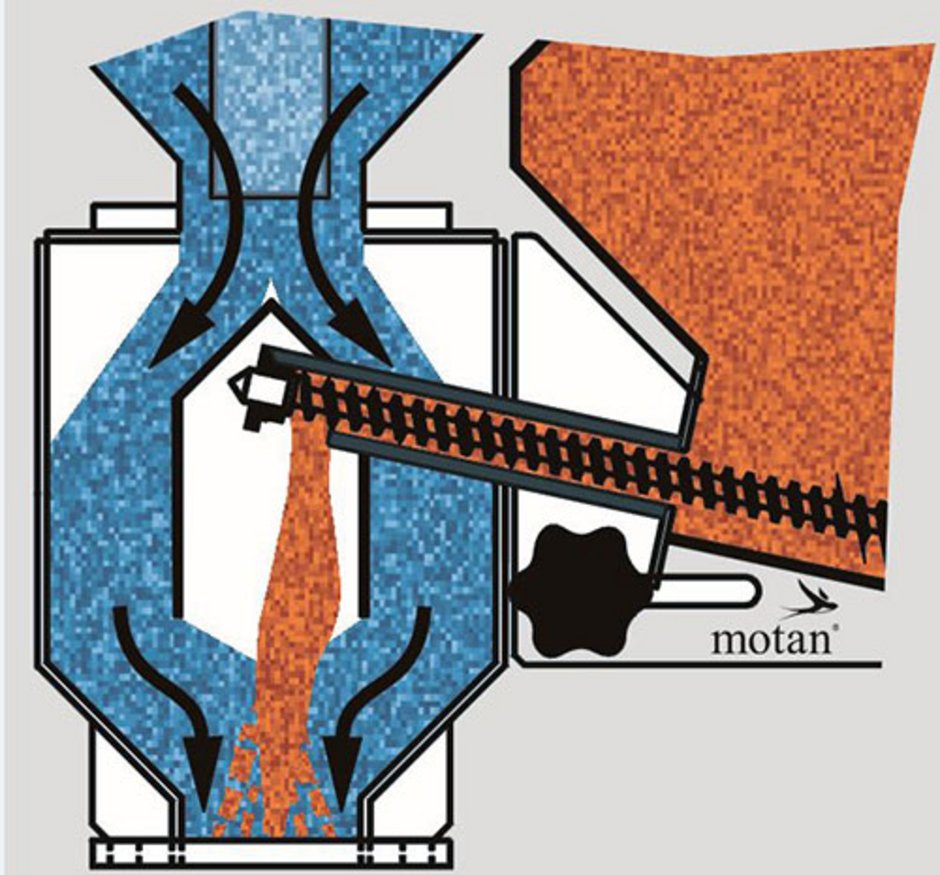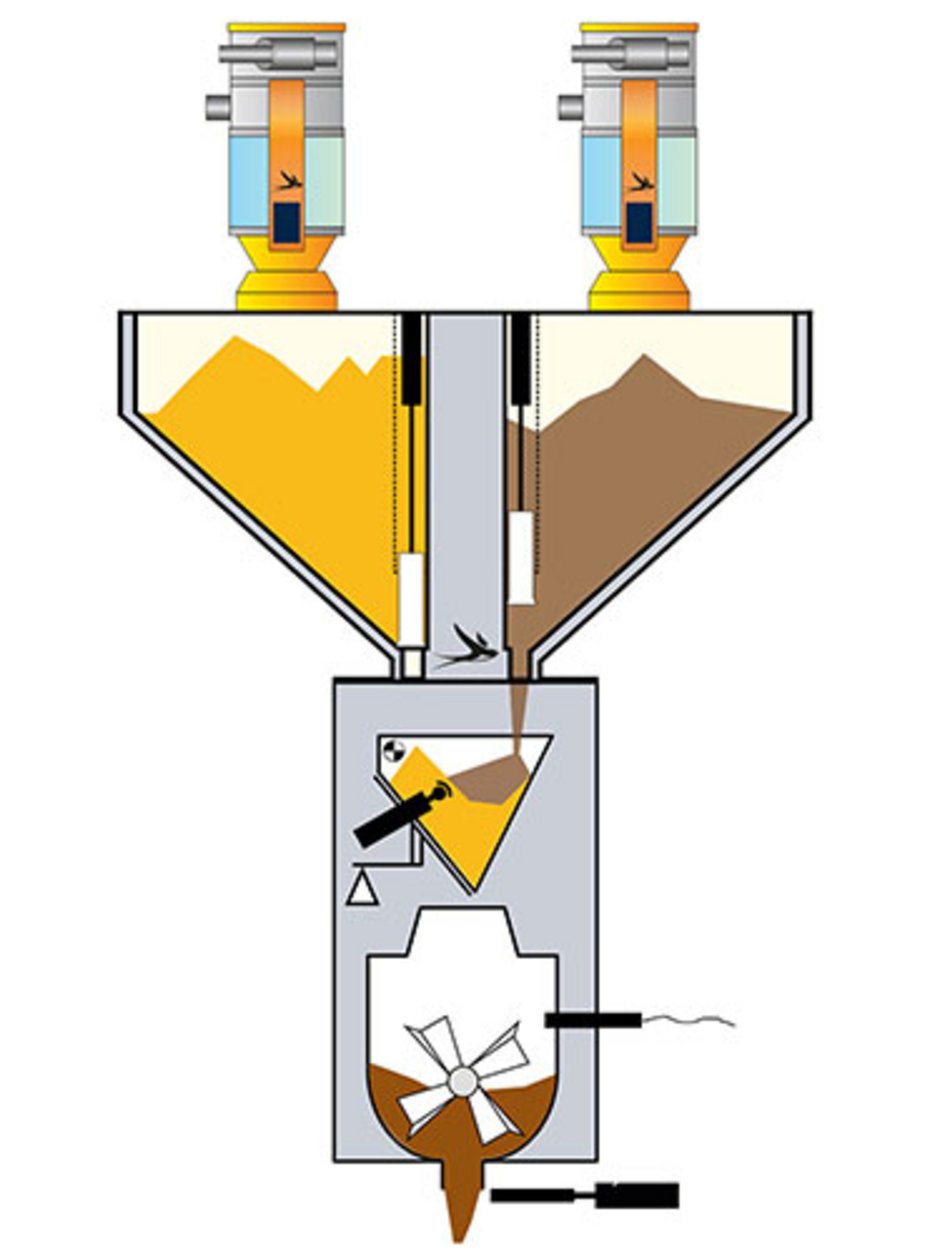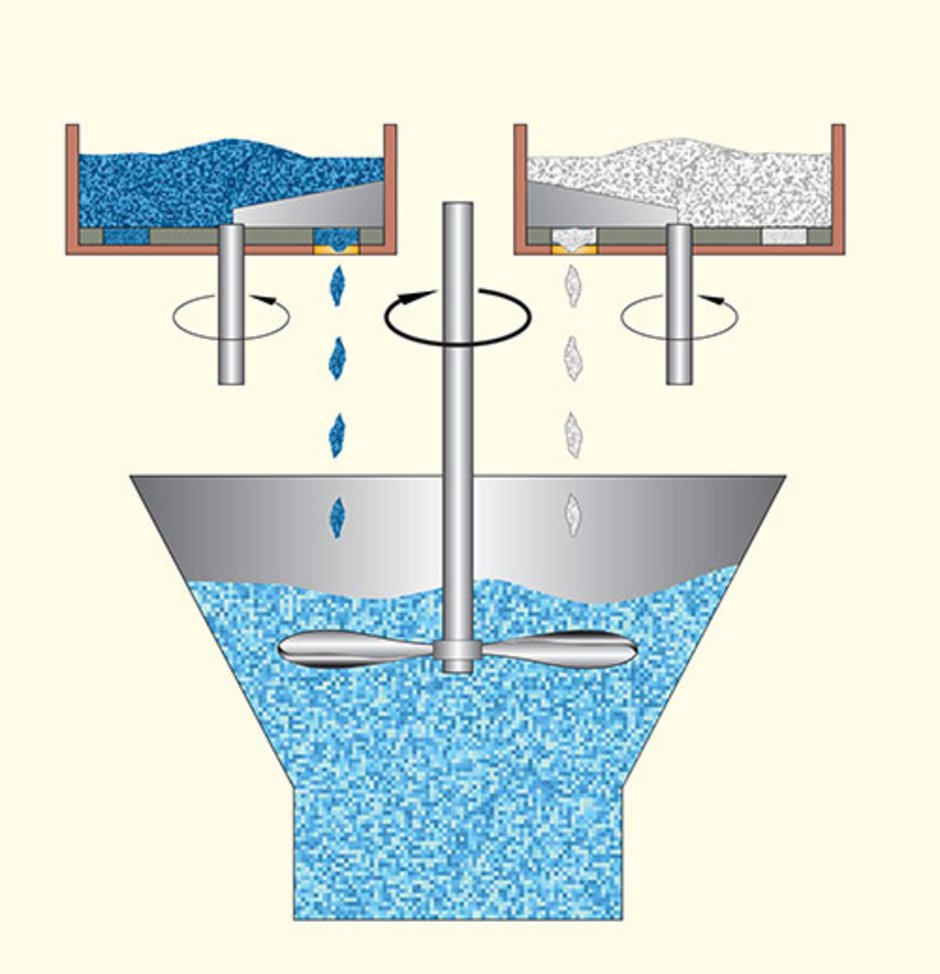10 - Why do we mix materials when dosing? And what should we keep in mind?

The purpose of dosing and mixing is to combine multiple materials in the right ratio. To ensure consistently high-quality results, the input components must be thoroughly mixed to produce a homogenous output material. However, true homogeneity is only technically possible upon plasticisation – so strictly speaking, the output material is a heterogeneous mixture. To make the difference clear let’s look at two everyday examples: muesli is a non-uniform, heterogeneous mixture of solids such as oatmeal flakes and raisins. Mayonnaise, on the other hand, is a homogeneous (uniform) emulsion.
Uniform blending is essential to ensuring consistently high-quality plasticisation. Otherwise, the end product being produced may have inconsistent colours or properties. Mixing is particularly important when asynchronous dosing is used (see Part 6), as the individual components have been dosed one after another and so have not yet been mixed in the collecting bin.

There are two types of mixers: static (also called passive) and active. When passive gravity mixing is used, the components are either blended by means of baffles, or in free fall. With a variation of this process, the auxiliary components are metered and flow into the main material as it is fed into the injection moulding unit.
Active mixers feature mechanical paddles or agitators that blend the individual components.

It is important to take the various material component properties into account. For example, materials with very different bulk densities can segregate. This can be partially resolved by turning the mixer off and on at defined intervals, or by operating the mixer for a defined period after mixing has already taken place.

Mixers can be vertical or horizontal, depending on the orientation of the mixing device. If the components are dosed into a container at about the same time, for example a collecting bin, horizontal mixers are a good choice. Vertical mixers are typically deployed when the components are added to the mixer one after another, at different times.
You can’t imagine how static and active mixers are used within dosing systems? Find more information on www.motan.com
